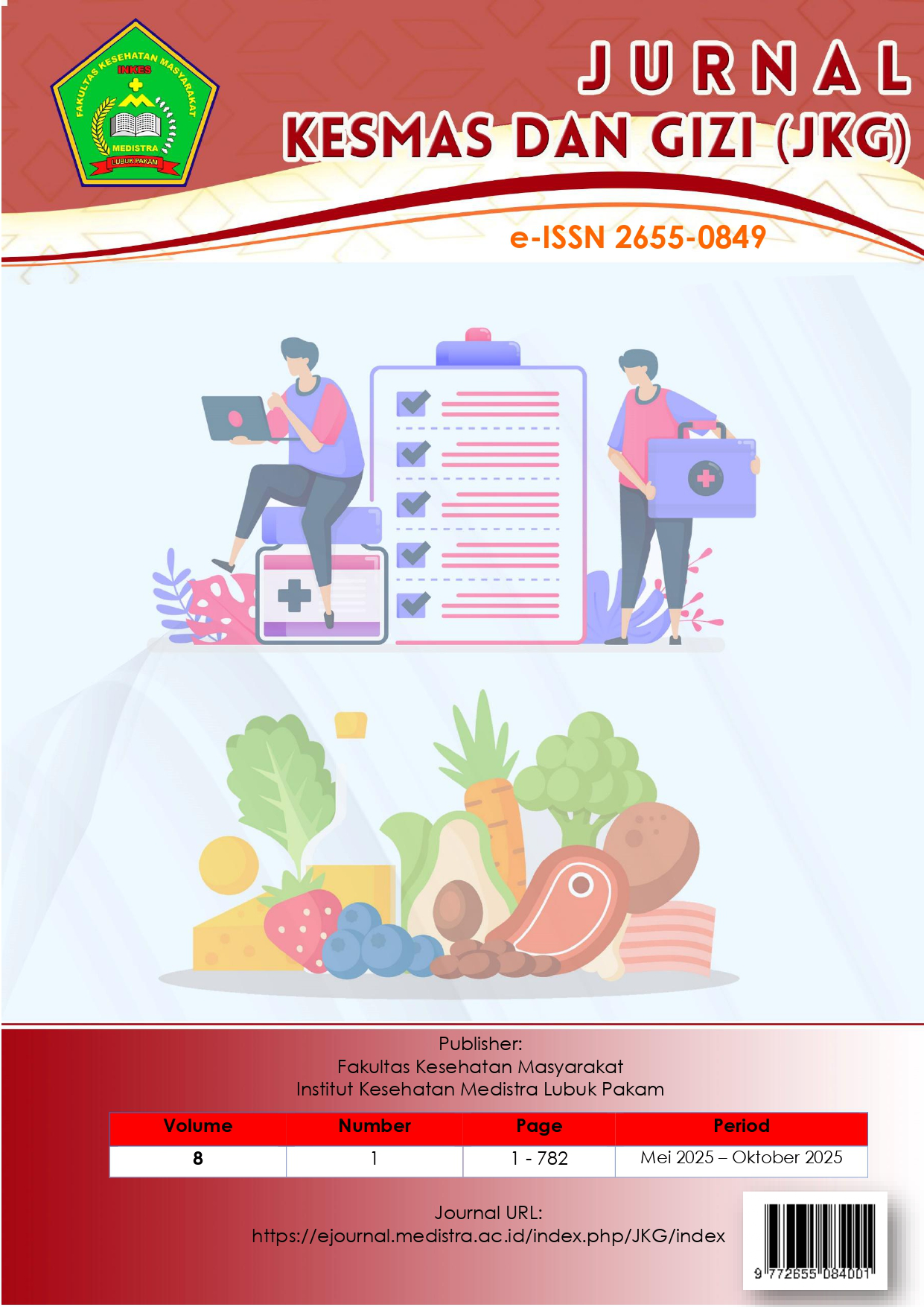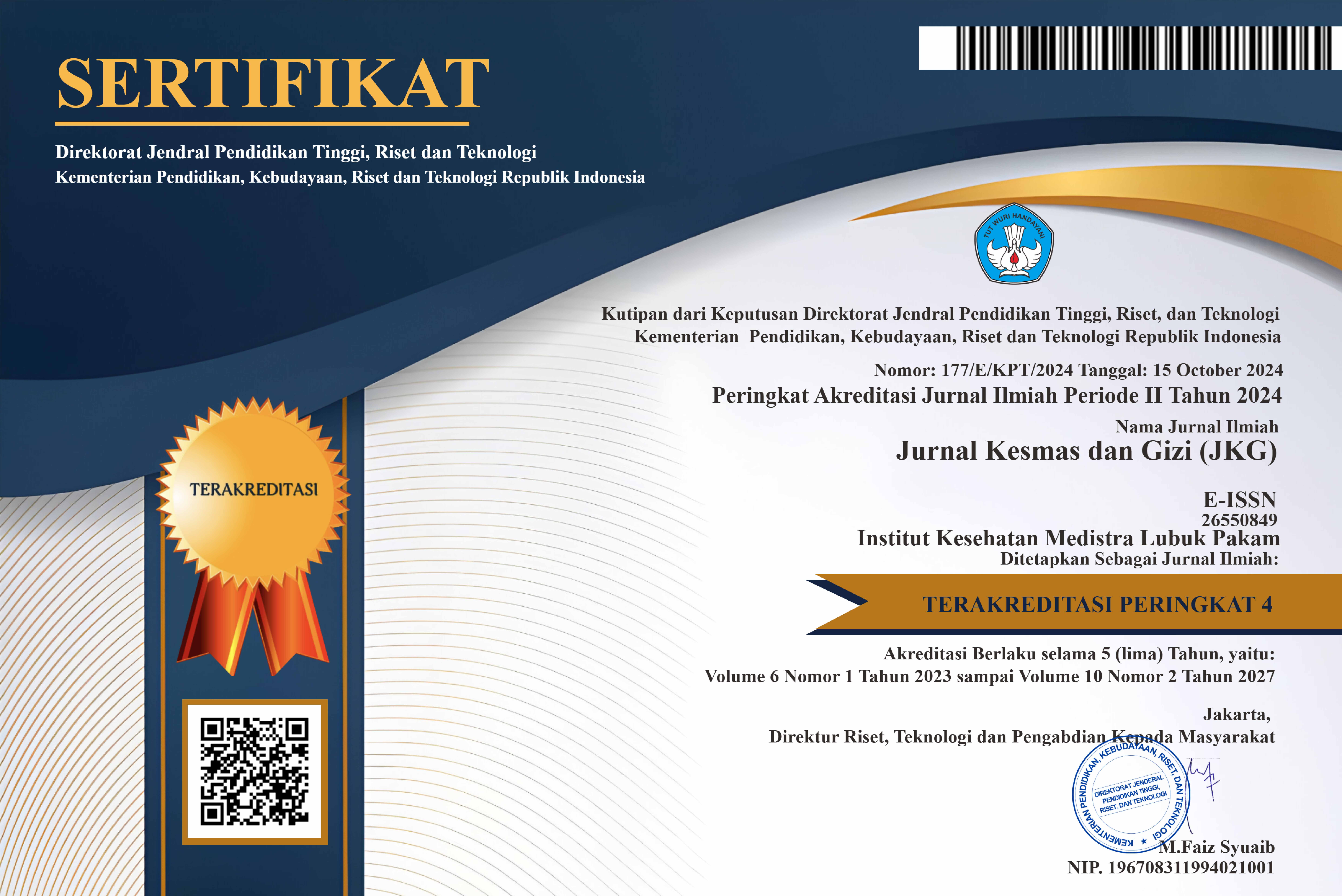Health Benefits Of Pectin: A Review Of Scientific Evidence And Consumption Dosage Recommendations
DOI:
https://doi.org/10.35451/m3x9dc55Keywords:
Pectin, Health, Dietary Fiber, Consumption dose, Literature reviewAbstract
Pectin is a soluble dietary fiber component commonly found in plant cell walls and has garnered significant attention in the field of functional foods due to its diverse health benefits. This article aims to systematically review scientific evidence regarding the health benefits of pectin and its recommended consumption dosage. The method used is a literature review by collecting articles from various scientific databases such as Google Scholar and PubMed within the range of 2014–2024. The review findings indicate that pectin has positive effects in lowering LDL cholesterol, triglycerides, and blood glucose levels. Additionally, pectin shows potential as an anti-cancer agent through the inhibition of Galectin-3, as well as demonstrating immunomodulatory activity and a key role in maintaining gut health. Pectin has also been shown to be safe as a biomaterial based on cytotoxicity tests on human cell cultures. The recommended dosage of pectin varies depending on its intended use, with an effective range in humans between 15–30 grams per day. However, excessive intake may cause mild digestive discomfort such as bloating or gas; therefore, gradual consumption is advised. In conclusion, pectin holds great potential as a functional food component and therapeutic agent. Nevertheless, further research is needed to evaluate its effectiveness in human populations, determine optimal dosage, and explore its interactions with other dietary components. In addition, the development of high-bioavailability pectin-based products could be a strategic approach to maximizing its health benefits.
Downloads
References
[1] N. J. Temple, “A rational definition for functional foods: A perspective,” Front. Nutr., vol. 9, 2022, doi: 10.3389/fnut.2022.957516.
[2] T. Yabe, “New understanding of pectin as a bioactive dietary fiber,” J. Food Bioact., vol. 3, pp. 95–100, 2018, doi: 10.31665/jfb.2018.3152.
[3] M. Moslemi, “Reviewing the recent advances in application of pectin for technical and health promotion purposes: From laboratory to market,” Carbohydr. Polym., vol. 254, no. 24, p. 117324, 2021, doi: 10.1016/j.carbpol.2020.117324.
[4] R. Indriani, A. M. Legowo, and S. Susanti, “Characteristics of Pectin Isolated from Mango (Mangifera indica) and Watermelon (Citrullus vulgaris) Peel,” J. Appl. Food Technol., vol. 4, no. 2, pp. 31–34, 2018, doi: 10.17728/jaft.42.
[5] N. Rantika and T. Rusdiana, “Penggunaan Dan Pengembangan Dietary Fiber,” Farmaka, vol. 16, no. 2, pp. 152–165, 2018, [Online]. Available: https://www.academia.edu/79692111/Penggunaan_Dan_Pengembangan_Dietary_Fiber_Review_Jurnal.
[6] K. F. Technology, P. Studi, S. Teknologi, F. T. Pertanian, and U. K. Soegijapranata, “Review: Sinergisme Bakteri Asam Laktat (Bal) Dengan Penambahan Prebiotik Jahe, Dan Kunyit Review: Synergism of Lactic Acid Bacteria (Bal) With the Addition of Prebiotics of Ginger and Turmeric Konsentrasi Food Technology and Innovation Program Studi Sarja,” 2022.
[7] N. A. P. Sena, M. Sa’pang, and K. C. Palupi, “Hubungan Asupan Zat Gizi, Indeks Massa Tubuh, dan Aktivitas Fisik terhadap Kadar Kolesterol Darah Total pada Pasien Penyakit Jantung Koroner di RSUD Kota Prabumulih,” Heal. Publica, vol. 1, no. 1, pp. 1–12, 2020.
[8] W. W. Safitri, C. Yuniarifa, and K. D. Utami, “Pengaruh Kombinasi Ekstrak Belimbing Wuluh dan Ekstrak Kunyit terhadap Kadar Gula Darah Puasa (Studi Eksperimental pada Tikus Jantan Galur Wistar yang diinduksi Streptozotocin),” J. Ilm. Sultan Agung, vol. 2, no. 1, pp. 136–145, 2023, [Online]. Available: jurnal.unissula.ac.id.
[9] W. Zhang, P. Xu, and H. Zhang, “Pectin in cancer therapy: A review,” Trends Food Sci. Technol., vol. 44, no. 2, pp. 258–271, 2015, doi: 10.1016/j.tifs.2015.04.001.
[10] Z. Nurman, M. Masrul, and S. Sastri, “Pengaruh Pektin Buah Apel (Malus Sylvestris Mill) Terhadap Kadar LDL Kolesterol pada Tikus Putih Jantan (Rattus Novergicus) Hiperkolesterolemia,” J. Kesehat. Andalas, vol. 6, no. 3, p. 679, 2018, doi: 10.25077/jka.v6i3.757.
[11] S. W. Setyaningtyas, N. Permatasari, and A. Mustafa, “Efek Tepung Kesemek (Diospyros kaki L.var Junggo) terhadap Kadar Trigliserida Serum pada Tikus Wistar Jantan yang Diberi Diet Aterogenik,” Amerta Nutr., vol. 1, no. 1, p. 38, 2017, doi: 10.20473/amnt.v1i1.2017.38-45.
[12] P. Dhaneswari, C. G. Sula, Z. Ulima, and P. Andriana, “Pemanfaatan Pektin Yang Diisolasi Dari Kulit Dan Buah Salak (Salacca Edulis Reinw) Dalam Uji in Vivo Penurunan Kadar Kolesterol Dan Glukosa Darah Pada Tikus Jantan Galur Wistar,” Khazanah, vol. 7, no. 2, pp. 39–60, 2015, doi: 10.20885/khazanah.vol7.iss2.art4.
[13] Rahmayati, Kamaliyah. "Kacang Buncis (Phaseolus vulgaris L.) Mampu Menurunkan Kadar Glukosa Dalam Darah Pada Penderita Diabetes Mellitus." Pedago Biologi: Jurnal Pendidikan dan Pembelajaran Biologi 9.1, pp 48-57, 2021.
[14] T. Bin Emran et al., “Pectin: A Bioactive Food Polysaccharide with Cancer Preventive Potential,” Molecules, vol. 27, no. 21, pp. 1–21, 2022, doi: 10.3390/molecules27217405.
[15] W. Rizki, N. G. Cempaka, S. Hartono, F. A. Fajrin, K. P, and Rochmah, “Aktivitas Antikanker Pektin Kulit Buah Kakao Terhadap Jumlah Sel Goblet Kolon,” Indones. J. Pharm. Sci. Technol., vol. 2, no. 2, p. 75, 2015, [Online]. Available: http://jurnal.unpad.ac.id/ijpst/article/view/7903.
[16] N. L. Auliya, R. D. Aryadina, and S. I. Rahmawati, “Digital Repository Universitas Jember Digital Repository Universitas Jember,” Ef. Penyul. Gizi pada Kelompok 1000 HPK dalam Meningkat. Pengetah. dan Sikap Kesadaran Gizi, vol. 3, no. 3, pp. 69–70, 2017.
[17] F. Blanco-Pérez, H. Steigerwald, S. Schülke, S. Vieths, M. Toda, and S. Scheurer, “The Dietary Fiber Pectin: Health Benefits and Potential for the Treatment of Allergies by Modulation of Gut Microbiota,” Curr. Allergy Asthma Rep., vol. 21, no. 10, 2021, doi: 10.1007/s11882-021-01020-z.
[18] M. Zhu et al., “Immunological Activity and Gut Microbiota Modulation of Pectin from Kiwano (Cucumis metuliferus) Peels,” Foods, vol. 11, no. 11, pp. 1–14, 2022, doi: 10.3390/foods11111632.
[19] H. Steigerwald et al., “Dietary fiber pectin alters the gut microbiota and diminishes the inflammatory immune responses in an experimental peach allergy mouse model,” Sci. Rep., vol. 14, no. 1, pp. 1–13, 2024, doi: 10.1038/s41598-024-82210-3.
[20] A. Nurhayati, “Extraction Of Pectin From Cavendish Banana Peel (Musa acumminata Cavendish),” Open Sci. Technol., vol. 02, no. 02, pp. 2776–169, 2022, [Online]. Available: https://opscitech.com/journal.
Downloads
Published
Issue
Section
License
Copyright (c) 2025 Sri Puji Rahayu

This work is licensed under a Creative Commons Attribution 4.0 International License.
Copyright in each article is the property of the Author.


























